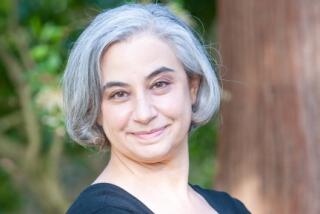Children Learn to Share Family Spotlight
- Share via
Their moms and dads may be busy brushing up on their Lamaze breathing techniques, but no amount of panting and blowing is going to make the arrival of a new sibling any less painful for those who will soon have to give up their place as the baby of the family.
So instructor Jo Ann Higgins at St. Jude Hospital and Rehabilitation Center in Fullerton uses different methods to help 3- to 10-year-olds adjust to the idea of sharing the family spotlight in a “For Big Brothers and Sisters Only” class designed just for them.
“Something pretty special is going to happen in your family,” Higgins tells a group of about a dozen children. (It had better be pretty special. It’s early on a Saturday morning, and these youngsters had to forgo watching “Pee-wee’s Playhouse” to be here.)
“Can anyone tell me what it is?” asks Higgins. Small hands go up all over the room.
“We’re going to have a baby,” one of the children announces.
“We’re going to have a baby and a cat!” says another.
Their mothers, and in some cases fathers, are sitting nearby. And for extra security, many of them have brought along a favorite stuffed toy: One little girl brought her Cabbage Patch Kid; a young boy came to class with a plush replica of Shamu, the killer whale.
“What is this baby going to be able to do?” she asks.
“He can cry,” says one of the children.
“You have to cover your ears,” adds another.
“Will he have teeth?” Higgins asks.
“When he’s first born he won’t,” one child responds, after giving the question some thought.
“Do you think your baby’s going to make you angry sometimes?” Higgins asks, and the class comes back with a resounding, “Yes!”
“Do you think he will make you happy sometimes?” she asks. This time, the response is quieter and more tentative.
“Well, sometimes.”
“I don’t know.”
“No.”
“Yes.”
“Maybe.”
“It seems like sibling rivalry is going to be there no matter what,” Higgins says later. She remembers her own granddaughter’s reaction when she first saw her younger sister. “She looked at the baby and said, ‘Is she going to stay here?’ ” she recalls with a chuckle.
But there are ways to minimize problems, says Denise Kozak, a social worker who teaches the class along with Higgins. For part of the one-hour class, Kozak takes the adults into another room while the children stay with Higgins to watch another videotape (“I’m a Little Jealous of That Baby”) and discuss their feelings more privately.
“It helps to put yourself in the child’s shoes,” Kozak says. She uses a scenario from the best-selling book “Siblings Without Rivalry” by Adele Faber and Elaine Mazlish to make the point.
“Imagine that your spouse puts his arm around you and says, ‘Honey, I love you so much I’ve decided to have another wife just like you.’ The new wife is younger and cuter, and everywhere you go, people make comments about how cute she is. And then he goes into your closet and takes some of your clothes to give to her, explaining that since you’ve put on a little weight, they don’t fit you anymore, but they fit the new wife perfectly.
“And then he asks you, ‘So, how do you like the new wife?’ What would you say?”
“(Older) children need a lot of attention just for them, time when you aren’t even talking about the baby,” Kozak says. “Parents need to realize that there are going to be some bad feelings there, and those have got to come out before the good feelings can come in.
“The younger the children are, the harder it is for them to put what they’re feeling into words. Sometimes we as parents have to put that into words for them.”
Children often misbehave after a new baby arrives, and Kozak says that’s normal. “It’s a way for them to get attention,” she says. “Good behavior is sometimes overlooked. But bad behavior is usually going to get a reaction.
“You just have to remember that it’s the behavior that’s bad, not the child.”
After each child has a chance to hold a specially designed seven-pound rag doll to get an idea of what it will feel like to hold the new brother or sister (“But always ask mom or dad first,” Higgins cautions), the class gets onto the elevator and goes up to the nursery to see some real newborn babies.
Eight-year-old Geoff Weeks of La Habra, the senior student in the class, is also a veteran. He took the same class five years ago when his brother, Timmy, was born, and now the two boys are anticipating the arrival of another brother in July. Even in class, Geoff looks out for his younger brother, getting up to help him carry his cup of juice across the room.
Geoff and Timmy’s mother, Nancy, says she and her husband, Doug, signed Geoff up for the sibling class the first time because “we wanted him to have a little bit of an idea what to expect.” Both boys, she says, are excited about the new baby.
“Geoff did really well when Timmy was born. He was always very good with the baby and always asked if he could hold him. We didn’t have any problems at all for the first year,” Nancy says.
“Now, of course, they fight like cats and dogs.”


